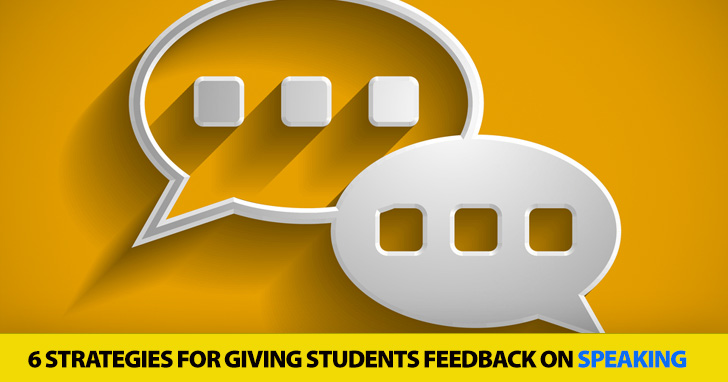Teacherless Troubleshooting: 6 Keys to Students Solving Language Struggles on Their Own


Here are six more subtle ways to offer feedback on spoken English without interrupting your students in the middle of their sentences.

It can be discouraging and disruptive if you try and correct your students while they are speaking. Instead of pointing out errors right then and there, try making a note on a sticky pad. Write down what your student said and, if you like, what the correct language should have been. Then, when you meet with your student one on one, share your observations and teach the necessary grammar and pronunciation points. Or if you don’t think you’ll have time to meet with your students one on one, pass the sticky note along to your student at the end of the day and have him look up the grammar structure for homework. While this method does not give immediate feedback, specific feedback does come before too much time has passed, and your students will have a concrete evaluation and explanation of their mistakes in your note. They can then refer back to this as often as they need to.
Sometimes the best way to correct a student is by not correcting her at all, at least not directly. Everyone has a natural feedback mechanism in the brain. We hear our own speech and that of others, and our brain makes corrections based on what we hear without us even realizing it’s happening. (That’s why most people will lose some or all of their accent when they move to a new region.) This works for ESL students and their grammar, too. So instead of pointing out a mistake your student has made, try repeating what she said, using the correct language structure and pronunciation. Odds are, she’ll realize her own mistake and say it correctly next time. If not, just keep repeating things the right way and her subconscious will eventually make the changes that are needed.
Remember that natural feedback mechanism for language? Well, it works when we hear our own voices, too. And that goes for someone who speaks English as a first language as well as someone who speaks it as a second language. Sometimes the best way to “correct” student errors is just to wait. Pause or don’t respond, and your student will often realize her own mistake and will repeat what she said using the correct structure. Though this method does not give students direct feedback, it does encourage them to listen to themselves speak and find their own errors. And that’s more like the natural process of language learning, anyway.
Rubrics are one of my favorite ways to grade. If you haven’t used a rubric before, they are simple and make grading subjective areas (like speaking) more objective. To make a rubric, you think of the different areas you plan on grading. For speaking, it might be pronunciation, spoken grammar, etc. Then list each of your evaluation categories on a piece of paper. Next, write your possible grades across the top of your paper. In this way you make a grid. Then in each square, write what your expectations are for each grade level on each evaluation point. For example, your first row might indicate that someone who speaks at an A level uses good pronunciation with few mistakes in sound formation. A B student might use generally good pronunciation with periodic mistakes in sound formation. A C student might struggle to use good pronunciation and may have frequent errors in sound formation, and so on. Then when you listen to your students speak, you simply circle the box that best describes their speech in each category. Average the grades in each category, and you have an objective speaking grade for each student. If you like, give your students the completed rubric to they can see where their greatest speaking strengths and struggles are.
If your students are able to talk about the rules of language, you might want to offer those rather than specific corrections when they make speaking errors. If you are evaluating a student’s speaking and he makes a mistake in his verb choice, for example he says, “I eated my lunch yesterday,” you might do this. Rather than pointing out that the verb is wrong, you could say, “Eat is an irregular past tense verb.” Then, your student can think about that rule and what he said and correct his own speech error. This method gives students instantaneous feedback but requires them to determine their own errors.
You can communicate an enormous amount of information without saying a word. We do it through body language. It often comes through facial expressions or gestures. You can use this type of quiet feedback to point out errors in your students’ speaking. Most facial expression will come naturally as you listen to your students, so you might not need to do much other than make your expressions more pronounced. You can also exaggerate your mouth and facial movements to show correct pronunciation of a sound. And you can use gestures to communicate things like keep going or go back to what you just said. Much body language is universal as well, so if you give feedback this way you won’t have to worry that your words are confusing to your students and keeping them from getting to the heart of your message.
Language learning is a long process, and students often get discouraged along the way. If you haven’t covered a topic in class and your students are making mistakes with that language construction, just let it go. They will learn the correct way to use that construction soon enough, and today has enough to worry about as it is.